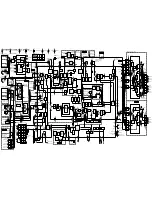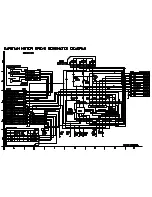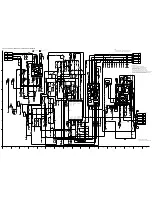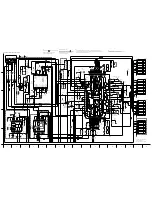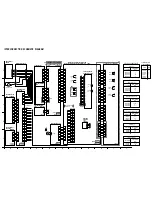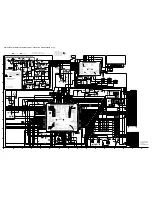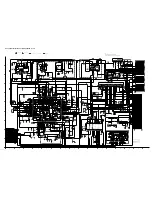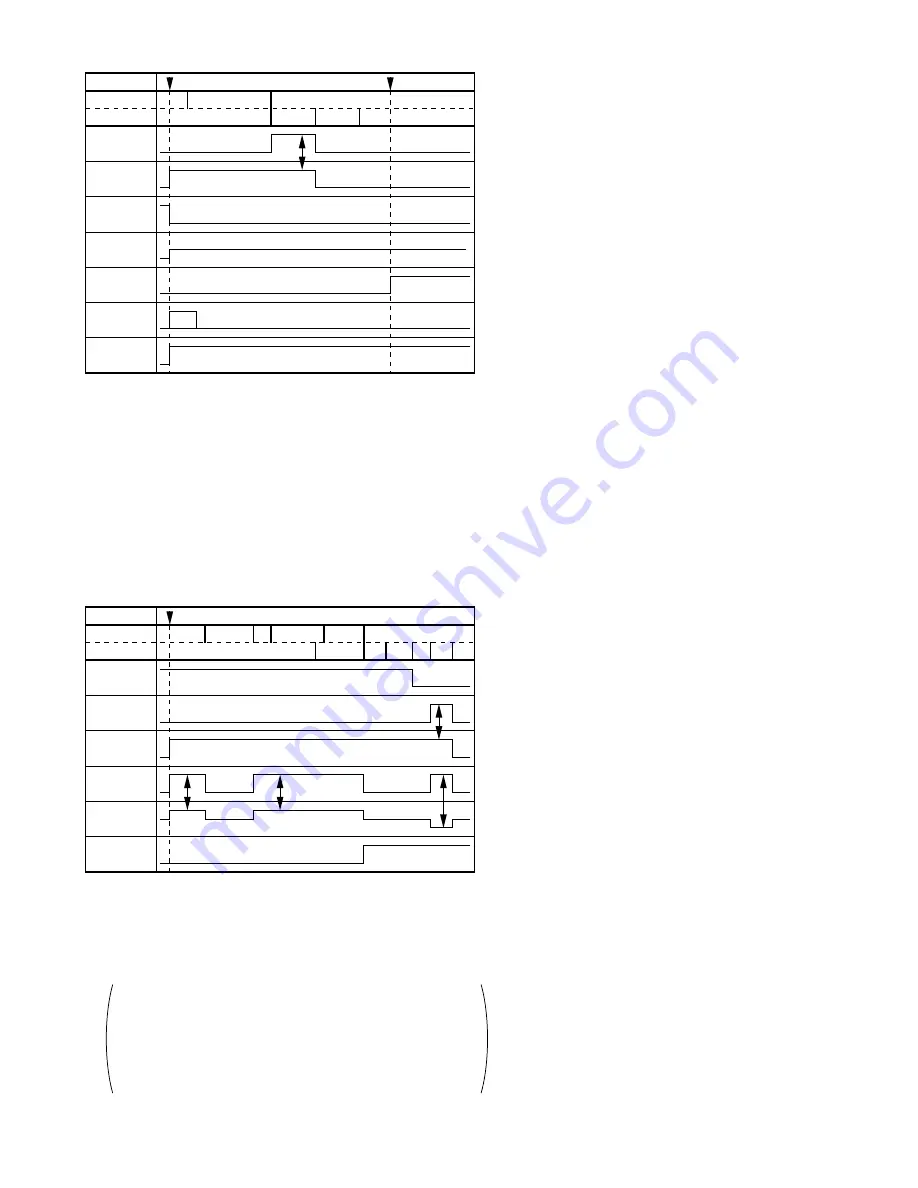
ACTION
POSITION
TIME ms*
TIMING CHART 8
STOP
2.6S
8
7
8-1
8-2
8-3
M
100
LOADING
FWD(H)
(PIN 10)
LOADING
REV(H)
(PIN 9)
CAPSTAN
R(H)/S(M)/F(L)
(PIN 42)
10
NOTE: 1) PIN NO. WITH BRACKET INDICATES PIN NO. OF IC6001.
2) *:IT SHOWS MAXIMUM TIME.
MODE BY MODE OPERATION
8. PLAY TO STOP/AFTER 10 MINUTES
8-1. The Mechanism changes the position to 7(Stop).
8-2. The Loading Motor stops.
At this position, the Pressure Roller and the Tension Arm are released to
reduce the tape tension.
8-3. After 5 minutes, the Cylinder stops.
5 MINUTES
AUDIO
MUTE(H)
(PIN 5)
ACTION
POSITION
TIME ms*
TIMING CHART 9
T-PHOTO TR
ON(L)
(PIN 83)
LOADING
FWD(H)
(PIN 10)
LOADING
REV(H)
(PIN 9)
CAPSTAN
R(H)/S(M)/F(L)
(PIN 42)
EJECT
4S
7S
5.1S
1
2
3
4
6/5
7
200
9-3
9-5
9-1
9-4
9-6
M
H
M
M
H
NOTE: 1) PIN NO. WITH BRACKET INDICATES PIN NO. OF IC6001.
2) *:IT SHOWS MAXIMUM TIME.
MODE BY MODE OPERATION
9. STOP TO EJECT
9-1. Unloads the mechanism to the Eject position(1).
9-2. The Idler Gear swings over to Supply Reel.
9-3. The Capstan Motor rotates in reverse direction to takeup a tape slack.
9-4. When the Mode Switch reaches position 1, the Cylinder stops.
9-5. T-Photo Tr signal goes LOW at position 1.
If T-Photo Tr signal does not become LOW within 4 seconds at position 1,
the mechanism moves to position 7.
If the mechanism does not reach position 3 within 2.6 seconds, or does not
reach position 4 from position 3 within 3 seconds after that, the mechanism
moves to position 1.
If T-photo Tr signal does not become Low within 4 seconds again, the unit
shuts off.
(For Auto Eject operation, if T-photo Tr signal does not become Low within
4 seconds at position 1, the mechanism moves to position 3 and the unit
shuts off.)
9-6. The Loading Motor stops.
9-7. The Idler Gear is released from Supply Reel.
500
20
L
CAPSTAN
ON(H)
CYLINDER
ON(L)
PB(L)
(PIN 6)
CAPSTAN
ON(H)
CYLINDER
ON(L)
9
PLAY
REC
9-2
9-7
Summary of Contents for PV-4601 A
Page 14: ...Fig 2 3 14 ...
Page 27: ...Fig 11 1 1 27 ...
Page 40: ...Fig D1 40 ...
Page 42: ...Fig D2 42 ...
Page 43: ...Fig D3 43 ...
Page 44: ...Fig D4 44 ...
Page 45: ...Fig D5 45 ...
Page 46: ...Fig D7 46 ...
Page 47: ...Fig D8 47 ...
Page 51: ...Fig M2 1 Fig M2 2 51 ...
Page 53: ...Fig M4 1 53 ...
Page 77: ...Fig M19 77 ...
Page 84: ...Fig J5 84 ...
Page 85: ...Fig J6 85 ...
Page 87: ...Fig J9 87 ...
Page 88: ...Fig J10 88 ...
Page 89: ...Fig J11 89 ...
Page 90: ...Fig J12 90 ...
Page 91: ...Fig J13 91 ...
Page 92: ...Fig J15 92 ...
Page 93: ...93 ...
Page 96: ...96 ...
Page 102: ...with the holes on the Pinch Lift Cam as shown in Fig A6 102 ...
Page 103: ...103 ...
Page 105: ...Fig K1 105 ...
Page 106: ...Fig K2 106 ...
Page 107: ...Fig K3 107 ...
Page 109: ...Fig B1 109 ...
Page 114: ...Fig E1 4 3 2 HOW TO READ THE ADJUSTMENT PROCEDURES 114 ...
Page 115: ...Fig E2 115 ...
Page 134: ...R6004 ERJ6GEYJ333V MGF CHIP 1 10W 33K 134 ...
Page 136: ...R6085 ERJ6GEYJ223V MGF CHIP 1 10W 22K 136 ...
Page 140: ...C4601 ECEA1CKA100 ELECTROLYTIC 16V 10 140 ...
Page 147: ...R6065 ERJ6GEYJ223V MGF CHIP 1 10W 22K 147 ...
Page 167: ...9 11 Operation Block Diagrams 1 167 ...
Page 178: ......
Page 204: ......
Page 205: ......
















